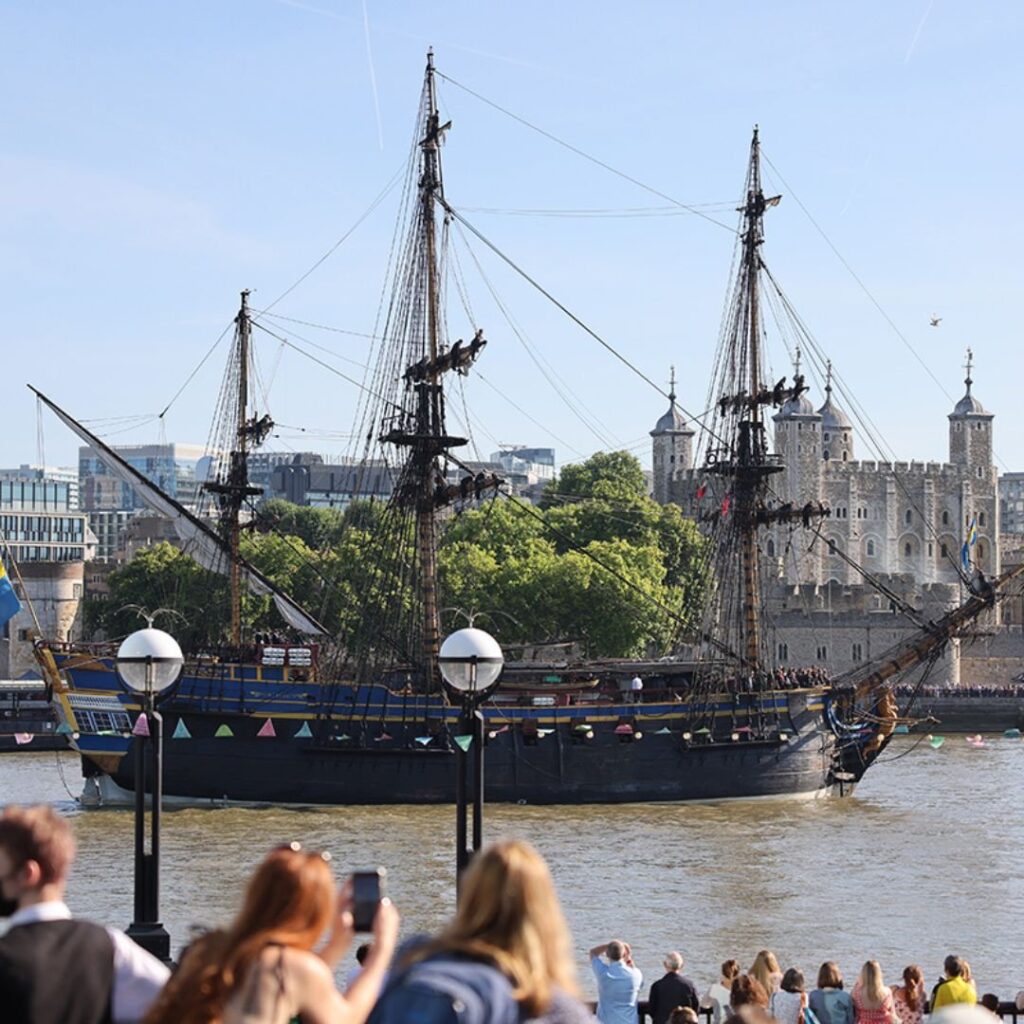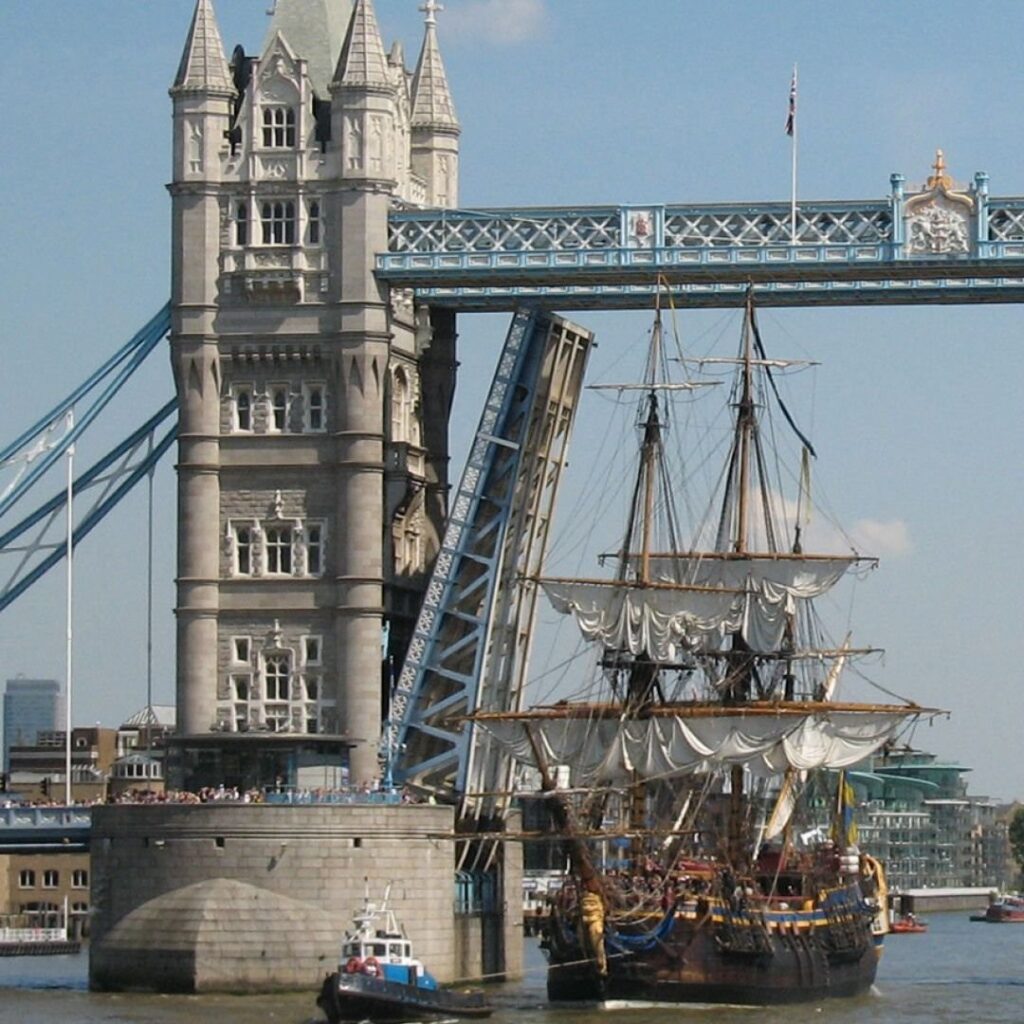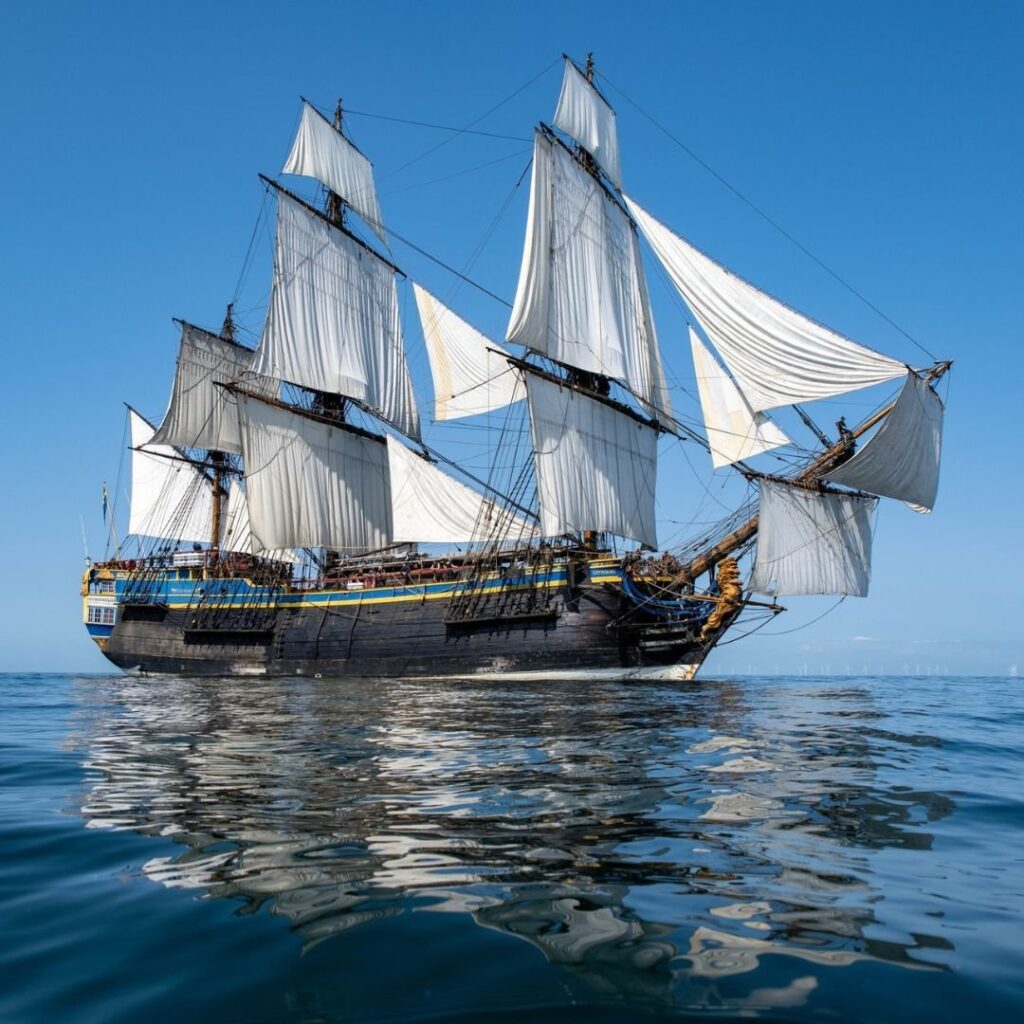
In 2022, a sight straight out of the 18th century graced the River Thames in London. A replica of the Götheborg, the world’s largest, active, ocean-going wooden sailing ship at the time of its construction, sailed down the iconic waterway, leaving spectators in awe.
This triumphant return, after a 15-year absence from the British capital, wasn’t just a visual marvel; it was a journey back in time. The meticulously detailed replica, a staggering 150 feet tall and 36 feet wide, stood proudly next to Tower Bridge, its cannons firing a salute to the city.

Built with painstaking attention to historical accuracy on a 1:1 scale, this remarkable galleon was the product of years of dedicated work by skilled shipbuilders. Its grand completion in 2005 marked a culmination of their efforts, and the ship quickly became a global sensation.
The original Götheborg, tragically, met its demise in 1745 after encountering a submerged rock near its home port of Gothenburg. This faithful replica, however, carries on the legacy of its predecessor, traversing the world’s oceans as one of the largest operational wooden sailing vessels today.

During its London visit, the Götheborg offered a unique opportunity for visitors. Stepping aboard was like stepping back in time. The ship’s exhibitions transported them to the 18th century, showcasing the fascinating history of the Götheborg and its crew. Visitors could also experience firsthand the “tremendous art of shipbuilding in a contemporary 18th century environment.”
Gotheborg’s official website offered a glimpse into the ship’s offerings: the beautiful weather deck with its helm, capstan, and ship’s bell; the sundeck boasting stunning views of the masts; and the gun deck, home to ten impressive cannons. For history buffs, there were even pieces from the original ship on display, adding an extra layer of authenticity to the experience.

The Original Götheborg
Built in Stockholm’s Terra Nova shipyard and launched in 1738, the original Götheborg was a marvel of its time. According to writer Björn Ahlander, constructing a vessel of such size in the 18th century was a monumental task, taking approximately one and a half years to complete.
This impressive ship, with a tonnage of around 830 tons and armed with 30 cannons, embarked on its maiden voyage in 1739 with a crew of 144. Throughout its service, it completed a remarkable three voyages to China.

Tragedy struck in 1745, however, as the Götheborg neared Gothenburg harbor. After a 30-month journey, with a mere 900 meters left to reach its destination, the ship inexplicably collided with the Knipla Börö, a well-known underwater rock.
The exact cause of this collision remains a mystery, with theories ranging from human error to unforeseen navigational issues. Efforts were made to salvage the cargo – a treasure trove of tea, porcelain, spices, and silk – but the ship itself remained lodged on the rock before eventually succumbing to the depths.

While the wreckage remained visible for some time, it eventually disappeared, leaving behind an aura of intrigue. The limited written accounts from the period further shroud the incident in ambiguity, particularly in regards to the captain’s actions, as Caspar Matthisson, the highly skilled pilot at the helm, had extensive experience navigating the area.
A Replica Rises from the Depths of History

The discovery of the Götheborg’s wreckage in 1984 sparked a remarkable project – the construction of a replica. The keel for this ambitious undertaking was ceremoniously laid in 1995, and the ship was meticulously crafted using traditional methods to ensure historical accuracy.
One minor concession was made to modernity, however. Recognizing that people are generally taller today than in the 18th century, the replica’s deck height was increased by a mere 10 centimeters to provide adequate headroom. While the exterior remained faithful to the original, the interior incorporated modern safety features.

The Götheborg’s official launch in 2003 was a grand affair, attended by representatives of the Swedish Royal Family. During its recent stay in London, the replica captured the hearts and imaginations of visitors. Flocking to the docks, they explored its decks, transported not just in space but also in time, as they envisioned themselves embarking on voyages of discovery and trade.
Whether the Götheborg will grace the Thames with its presence again remains to be seen, but the memories of its 2022 visit will undoubtedly linger for years to come.

Leave a Reply